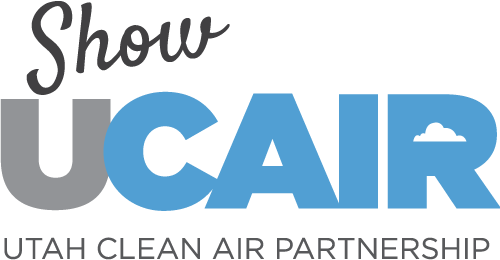During our June 2019 UCAIR partners meeting we heard first from Bryce Bird, Director of the Division of Air Quality about what it would take for our airshed to be no longer be considered in non-attainment. We then turned the time over to Phil Sarnoff with Bike Utah. He gave us presentation about the great things Bike Utah is doing and the future of active transportation in Utah.
Wintertime PM2.5 Non-Attainment to Attainment – Bryce Bird, Director, Division of Air Quality
Utah has received some good news over the past year pertaining to our wintertime PM2.5 non-attainment status. On June 5th, the EPA published a proposed approval of a clean data determination in the Salt Lake non-attainment area, which is the first step in the process of getting back into attainment. The DAQ monitors air quality and when pollution levels violate the standard, is required to prepare a State Implementation Plan (SIP). A clean data designation would suspend additional SIP requirements. However, DAQ must continue to maintain stricter permitting requirements for areas that are non-attainment. Control measures and technologies that were used as part of the SIP will remain in place even with a clean data determination.
The next step towards attainment after a clean data determination is to develop a maintenance plan. To help create these plans DAQ modelers will look at projections of growth, population, industrial, and area sources and take into account transportation emissions in order to create air quality models as far as 2035. This will demonstrate that for a ten-year period after approval we continue to maintain the standard. By the end of 2019 DAQ staff will present proposed maintenance plans for each of the non-attainment areas to the air quality board. Once a maintenance plan is in place, an area will not be considered in attainment until two 10-year planning periods under the maintenance plan are complete. Public comment is open through July 5th for the Salt Lake non-attainment area.
Further information is available on the Utah Division of Air Quality website.
Making Utah a Better Place to Ride – Phil Sarnoff, Bike Utah
The goal of Bike Utah is to make Utah a better place to ride for all cyclists. According to the Wasatch Front Regional Council, around 50% of all bike trips are three miles or less. Public transit services need active cycling or walking to get more people to use those services regularly. Cycling infrastructure is responsible for 85% of increased cycling. Bike Utah’s strategy to continue to encourage cycling is to have more and better planning and construction of cycling infrastructure around the state. This strategy will also lead to increased public support because more residents will use cycling as a mode of transportation in their everyday lives.
Currently, there are three exciting projects that Bike Utah is working on. First is the Wasatch Bike plan, will allow for consistent infrastructure crossing into other municipalities. Several counties along the Wasatch Front are set to adopt the plan, including Weber, Davis, Salt Lake, and Utah counties. This project started in 2016 with only 13% of Wasatch Front communities with bike infrastructure. Since then, locally driven progress and today 63% Wasatch Front communities active transportation plans.
Another initiative that Bike Utah is involved with is the 1,000 Miles Campaign started with Governor Herbert in 2017, with the goal of getting more bike trails in Utah by 2027. Finally, they have a youth bicycle education and safety training program to get youth more engaged in cycling and getting more public support for active transportation. The program has 9,260 participants. The program has been successful at introducing cycling to children and their families. A survey of participants reported an increase in bicycle safety knowledge by 73%, participant interest in bicycling by 75%, and interest among other household members by 70%. You can visit the Bike Utah website for further information.
PARTNER ROUND TABLE
Following the presentation, partners shared what projects and initiatives they are currently working on. These included:
Aimee Urbina, Utah Clean Energy – UCE is working on the Power SLC Energy Equity Program. They have a smart thermostat discount program starting, which is funded in part by a UCAIR Grant. The application opens June 17th and closes August 5th. The program is open to residents living in area codes 84114 and 84116. This discount will make smart thermostats available for $50 instead of $169. Go to Utah Clean Energy website for more information.
Kip Billings, WFRC – Last month WFRC adopted their 2050 transportation plan which encourages cluster developments, connected by public transit. Staff is researching the emissions impact from transportation compared with goals from DAQ and the EPA.
Justin Smart, Penna Powers – Ozone season is beginning. UCAIR has an educational video at ucair.org. Please use that video in your communications and to see what we are up against in the summertime. The DMV has video monitors that are now showing UCAIR air quality educational videos.
Thom Carter, UCAIR –
- At the end of this month we will be launching the 2019-20 Grants Program. The first step will be the Letters of Intent, due July 29.
- By the end of the month we will be relaunching the Water Heater Program.
- Smith’s reopened their downtown location with energy efficiency upgrades and idle free campuses.
- In partnership Rocky Mountain Power, Leaders for Clean Air, UCAIR, and DEQ, Sandy City unveiled 45 EV stations.
Please go to the UCAIR blog featuring partner meetings and the UCAIR community calendar for upcoming events.
NEXT MEETING: August 8, 2019, 9:00-11:00 AM

